Cauda Equina Syndrome Emedicine
Cauda equina syndrome emedicine. We compared the anthropometric features of patients who developed CES after a disc prolapse with those who did not but who had symptoms that required elective surgery. The severity of symptoms of cauda equina syndrome depends which nerves are squeezed and much they are compressed. The goal is to relieve pressure on the nerves of the cauda equina by removing the compressing structures and increasing the space available for the nerves in the spinal canal.
Other drugs for erectile dysfunction include yohimbine papaverine and alprostadil. A meta-analysis of surgical outcomes. Cauda equina syndrome CES refers to a group of symptoms that occur when nerves in the cauda equina a collection of nerve roots that spread out from the bottom of the spinal cord become compressed or damaged.
Cauda equina syndrome results from an injury to the lumbosacral nerve roots below the tip of the conus medullaris occuring in between 2 and 6 of all laminectomies performed for lumbar disc herniation. Surgical treatment may be necessary for decompression or tumor removal especially if. Cauda equina syndrome involves injury to the lumbosacral nerve roots in the spinal canal and is characterized by an areflexic bowel andor bladder with variable motor and sensory loss in the.
Corticosteroids Anticoagulants Skeletal Muscle Relaxants Benzodiazepines Alpha 2-adrenergic Agonist Agents Neuromuscular Blocker Agent. Cauda equina syndrome is a medical emergency and should be treated promptly to reduce or avoid permanent problems such as paralysis or incontinence. Background The prognosis for cauda equina syndrome CES improves if a definitive cause is identified and management is instituted early.
The aim of this study was to compare the clinical characteristics of patients with and without abnormal MR imaging admitted to a neurosurgical unit with suspected cauda equina syndrome using a retrospective study of. We aimed to determine whether any clinical manifestation of CES as stated in Royal College of Radiology guidelines could predict the presence of established CES on MRI. These nerves roots connect the central nervous system and peripheral nervous system.
Cauda equina syndrome is a rare disorder that usually is a surgical emergency. This article relates the anatomy of the nervous system of the bladder rectum anus and sexual organs to the signs and symptoms of cauda equina syndrome and reviews. The outlook for patients affected by cauda equina syndrome is determined by the extent of damage to involved nerve tissue.
CES can lead to pain numbness and weakness in the lower back. Cauda equina syndrome with normal MR imaging.
Cauda equina syndrome CES refers to a group of symptoms that occur when nerves in the cauda equina a collection of nerve roots that spread out from the bottom of the spinal cord become compressed or damaged.
Shapiro S February 2000. Cauda equina syndrome is a rare disorder that usually is a surgical emergency. In patients with cauda equina syndrome something compresses on the spinal nerve roots. We aimed to determine whether any clinical manifestation of CES as stated in Royal College of Radiology guidelines could predict the presence of established CES on MRI. We recorded the age. Shapiro S February 2000. What is cauda equina syndrome. No previous studies have examined the physical characteristics of patients with cauda equina syndrome CES. Cauda Equina and Conus Medullaris Syndromes Medication.
The symptoms and signs of cauda equina syndrome tend to be mostly lower motor neuron LMN in nature while those of conus medullaris syndrome are a combination of LMN and upper motor neuron UMN effects see Table 1. You may need fast treatment to. Other drugs for erectile dysfunction include yohimbine papaverine and alprostadil. Medical realities of cauda equina syndrome secondary to lumbar disc herniation. The aim of this study was to compare the clinical characteristics of patients with and without abnormal MR imaging admitted to a neurosurgical unit with suspected cauda equina syndrome using a retrospective study of. What is cauda equina syndrome. Cauda equina syndrome results from an injury to the lumbosacral nerve roots below the tip of the conus medullaris occuring in between 2 and 6 of all laminectomies performed for lumbar disc herniation.



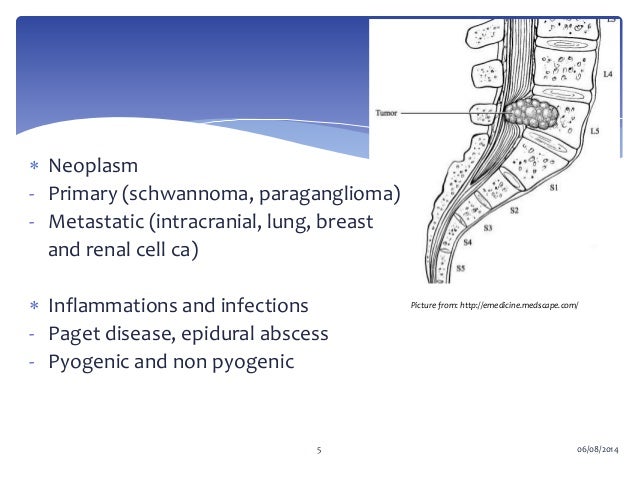



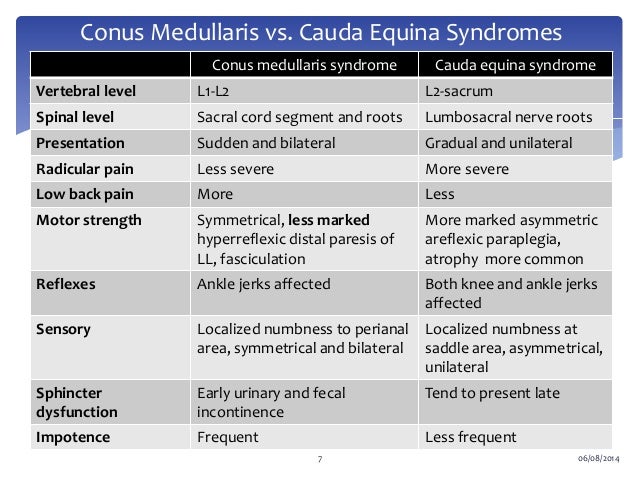








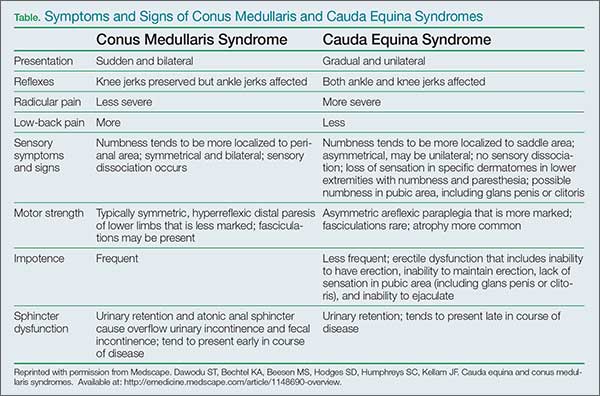
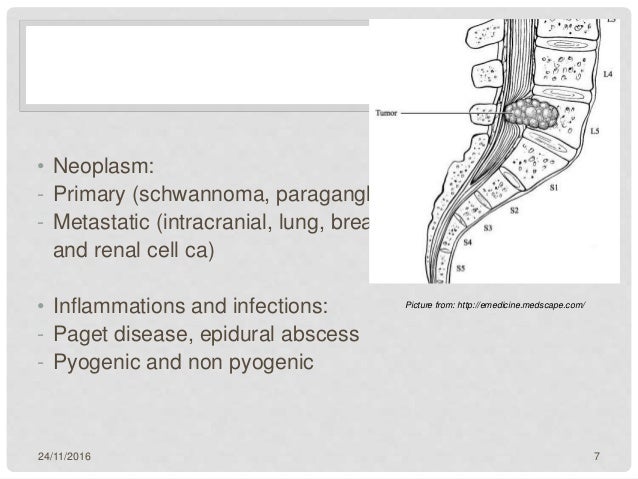
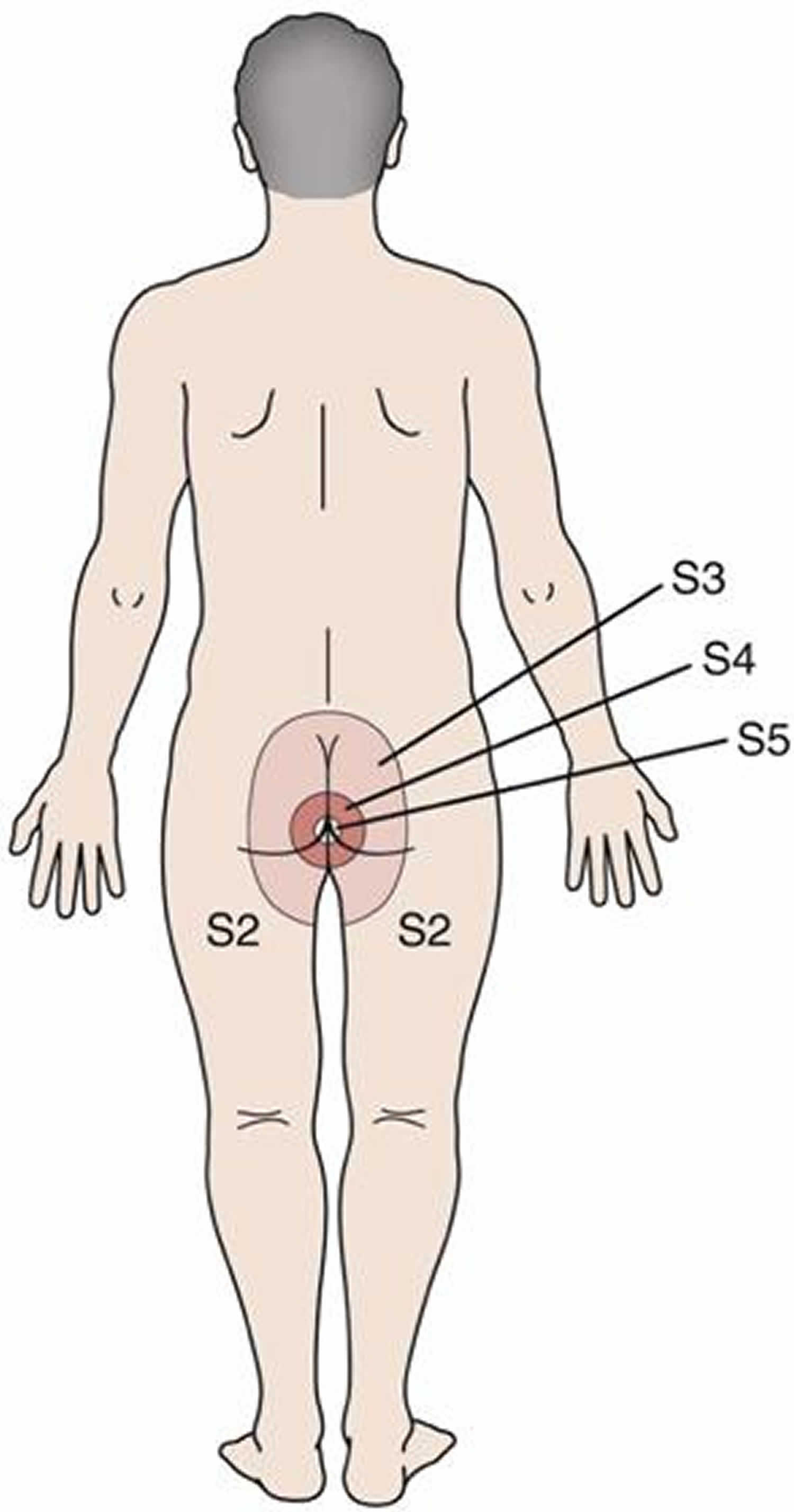








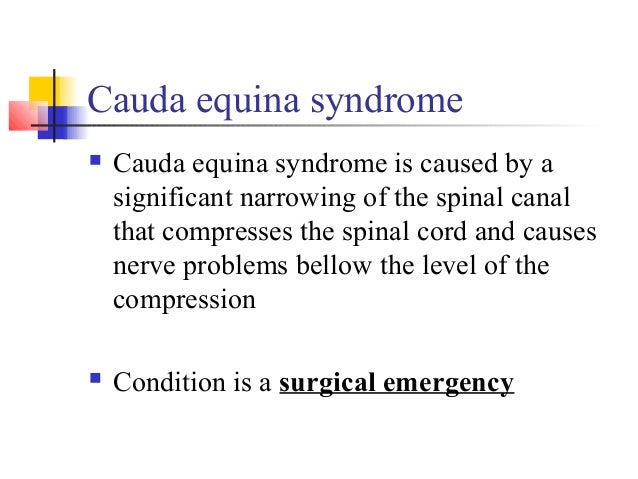
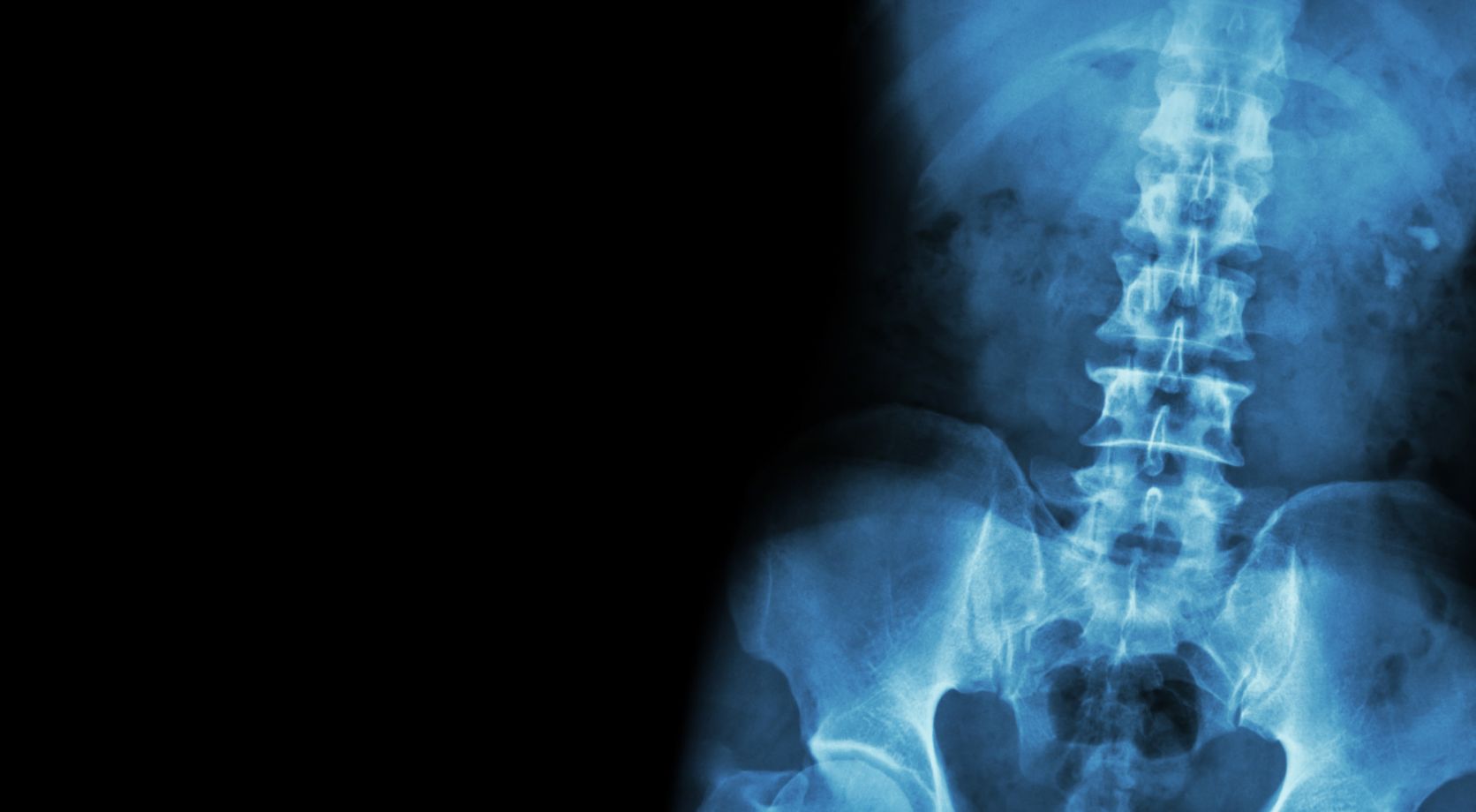


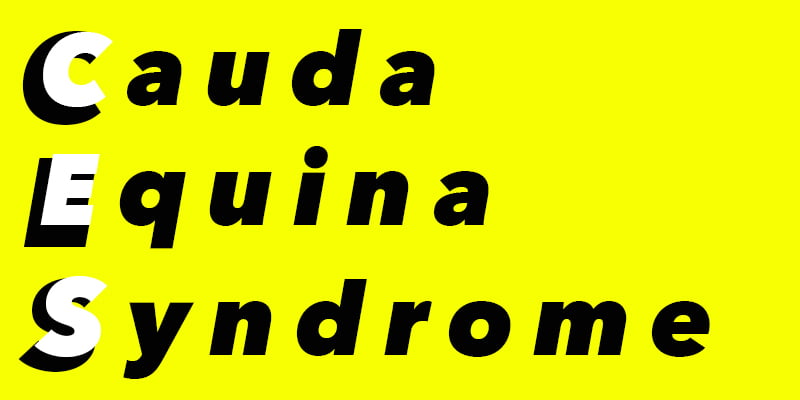


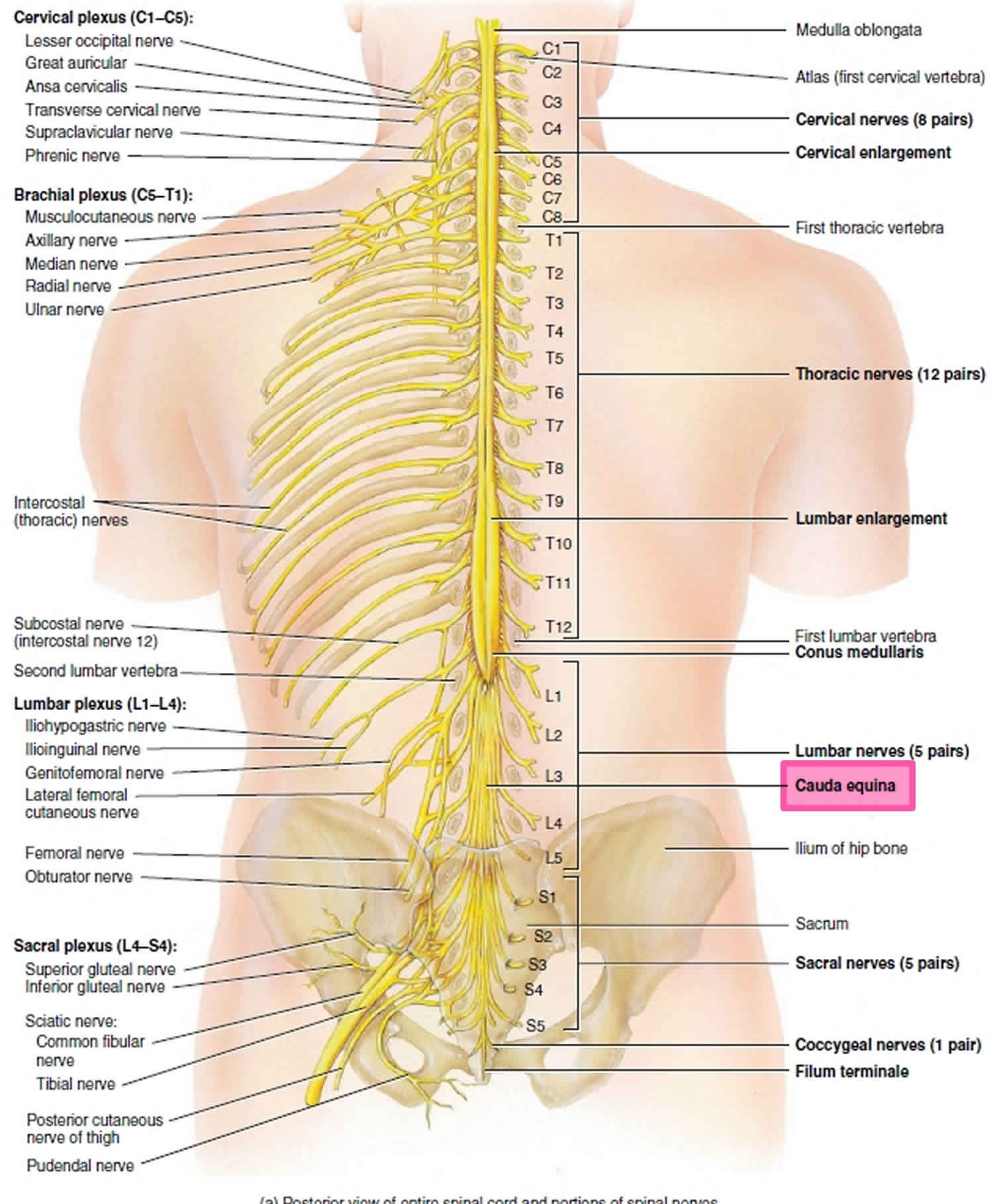



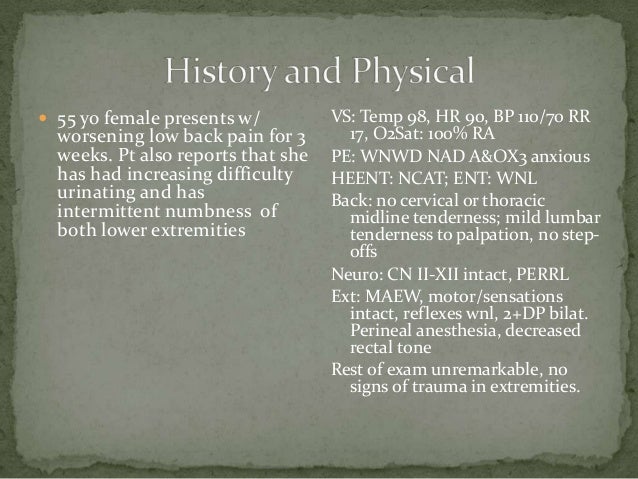

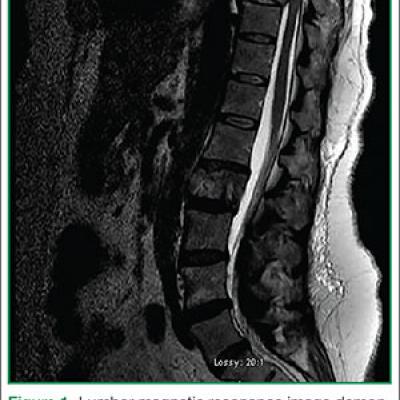



Post a Comment for "Cauda Equina Syndrome Emedicine"